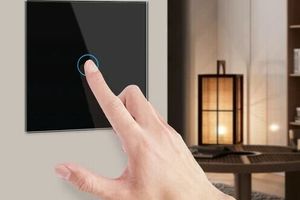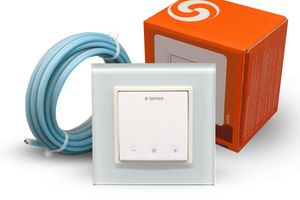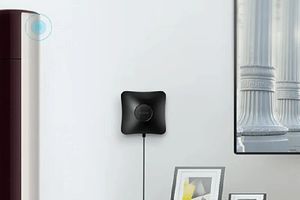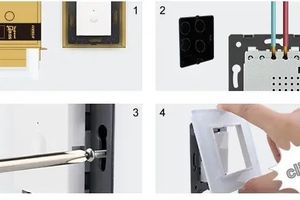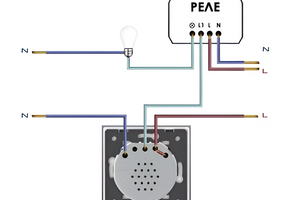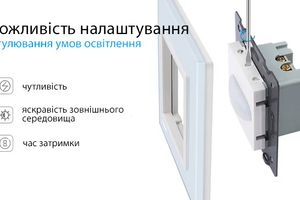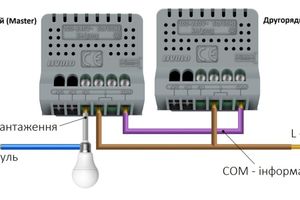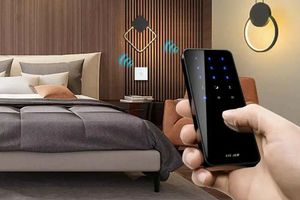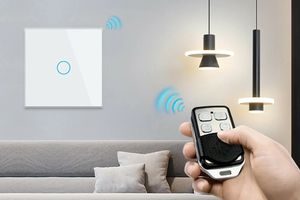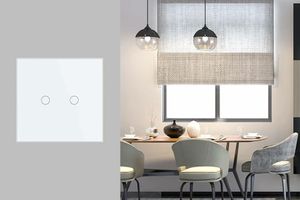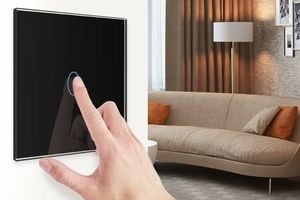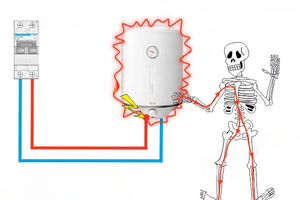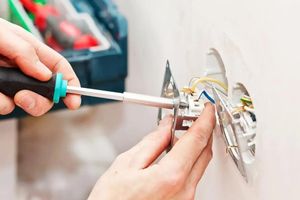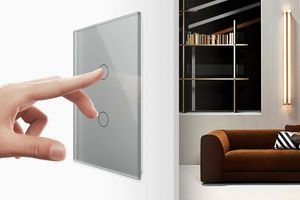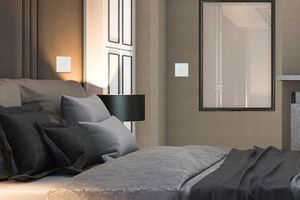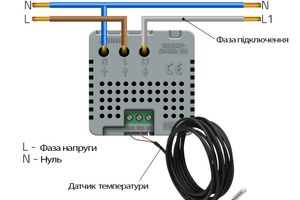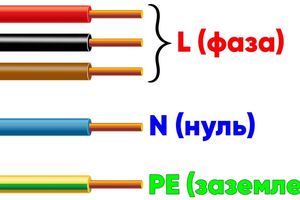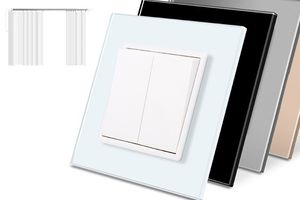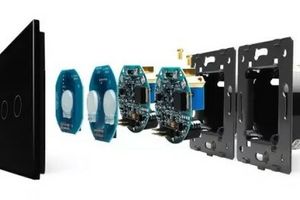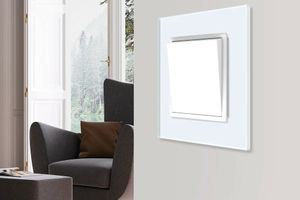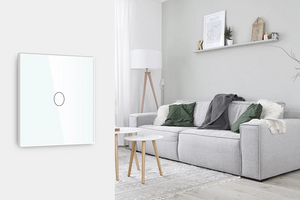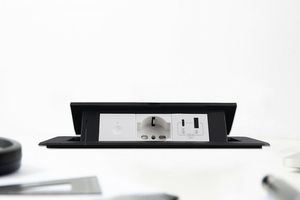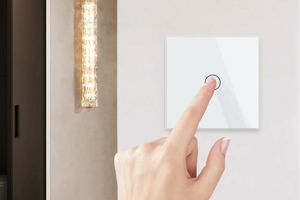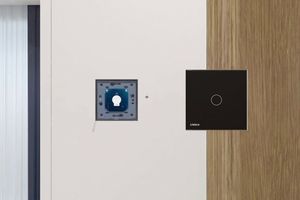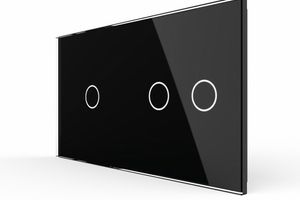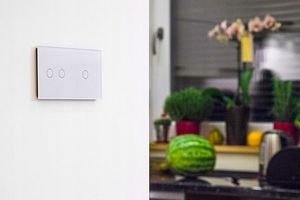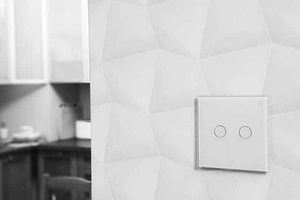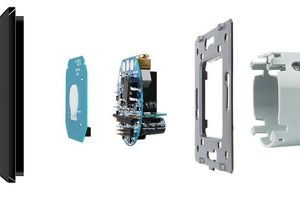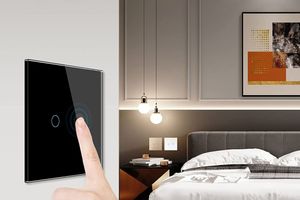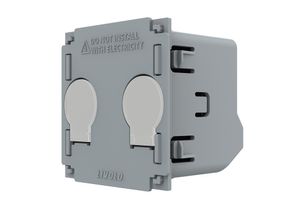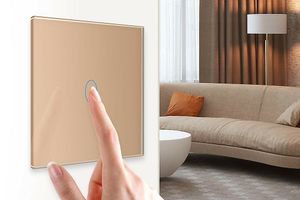When installing Terneo thermostats with article numbers S and SX in a vertical panel, it cannot be turned over due to the cast support of the Terneo module.
Modules of sockets, switches, thermostats, and other Livolo models can be installed in both vertical and horizontal combined panels.
The Terneo S thermostat with touch control is designed to maintain a constant temperature in the range of 5...40 °C. The temperature is controlled at the installation site of the temperature sensor, which can be easily removed if necessary. This thermostat is suitable for underfloor heating systems. or “full heating” based on an electric heating cable or heating film. The thermostat is protected against frequent switching of the power relay to extend its service life. If relay switching occurs too often (less than one minute between them), the thermostat delays turning on the relay, indicating the countdown with a flashing dot in the rightmost digit. This thermostat is ideal for regulating the temperature in a heated water floor system with a normally closed electrothermal actuator with a voltage of 230V.
Connection diagram
The temperature regulator can work with two types of sensors: analog (R10) or digital (D18). The analog sensor is connected to terminals 1 and 2. The colors of the wires do not matter when connecting. The digital sensor is connected with a blue wire to terminal 2, and a white wire to terminal 1. If the thermostat goes into percentage control mode, it is recommended to connect the blue wire to terminal 1 and the white wire to terminal 2. If the thermostat does not detect the sensor in both methods, you should contact Service center. The supply voltage (230 V ±10%, 50 Hz) is supplied to terminals 4 and 5, where phase (L) is connected to terminal 5, and zero (N) — to terminal 4. The load (connecting wires from the heating element) is connected to terminals 3 and 6.
Installation
The thermostat is designed for indoor installation with minimal risk of moisture and liquid ingress. When installed in a bathroom, toilet, kitchen or swimming pool, it should be placed in a place inaccessible to accidental splashes. The ambient temperature during installation should be within –5 ...+45 °C. The installation height of the thermostat should be from 0.4 to 1.7 m from the floor level. The thermostat is mounted and connected after installing and checking the load. To protect against short circuits in the load circuit, it is necessary to install an automatic circuit breaker (AB) with a rating of no more than 16 A in front of the thermostat. To protect a person from electric shock when laying heated floors in wet rooms, an RCD (residual current device) is installed. For the RCD to operate, the heating cable screen must be grounded (connected to the PE protective conductor) or, if the network is two-wire, a protective grounding must be made. The screen is connected to zero in front of the RCD. The thermostat is mounted in a standard mounting box with a diameter of 60 mm using mounting screws.
For installation, you need:
- make a hole in the wall for the mounting box and a groove for the wires;
- lay the power wires of the heating system and sensor to the installation box
- make connections in accordance with this passport;
- fix the thermostat in the mounting box.
The thermostat terminals are designed for wires with a cross-section of no more than 2.5 mm. It is advisable to use soft wire to reduce mechanical stress on the terminals. The ends of the wire must be stripped and crimped with insulated lugs. The wires are tightened into the terminals with a screwdriver with a blade width of no more than 3 mm. A screwdriver with a blade wider than 3 mm may damage the terminals, which may void your warranty. The terminals must be tightened with a torque of 0.5 N·m. The sensor must be installed in such a way that it can be easily replaced in the future. If necessary, it is allowed to shorten and extend (no more than 20 m) the connecting wires of the sensor. The power wires should not cross the connecting wires of the sensor to avoid interference.


















































